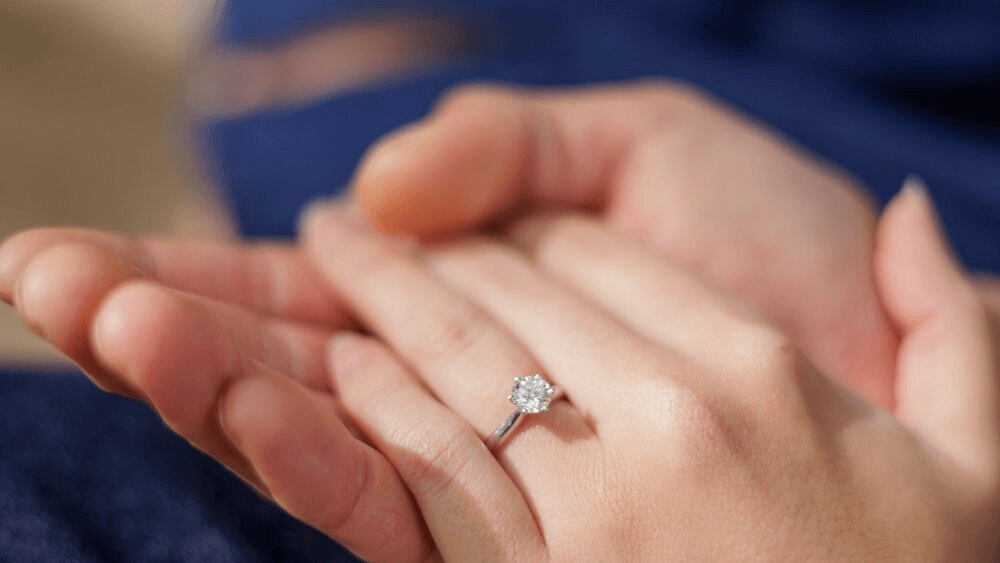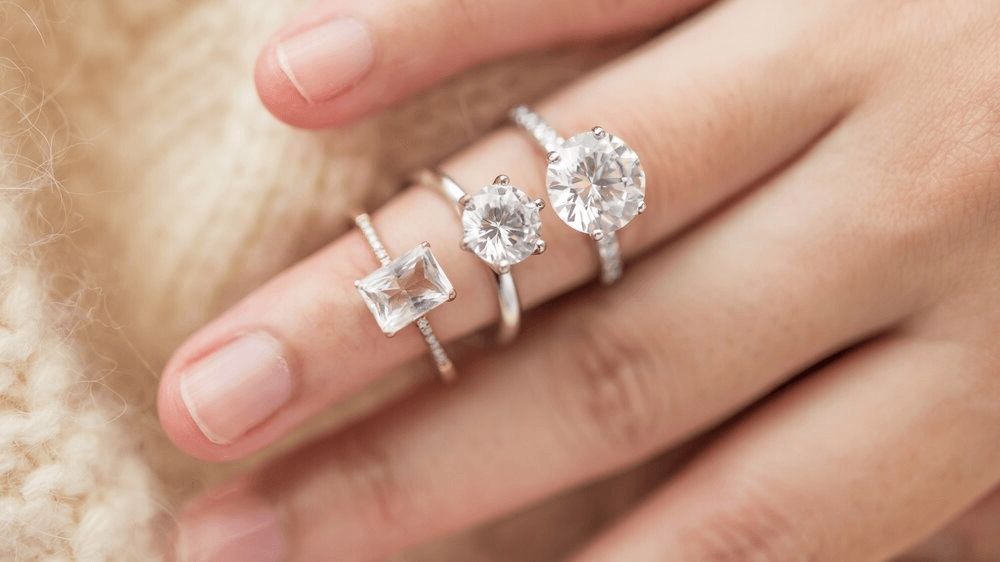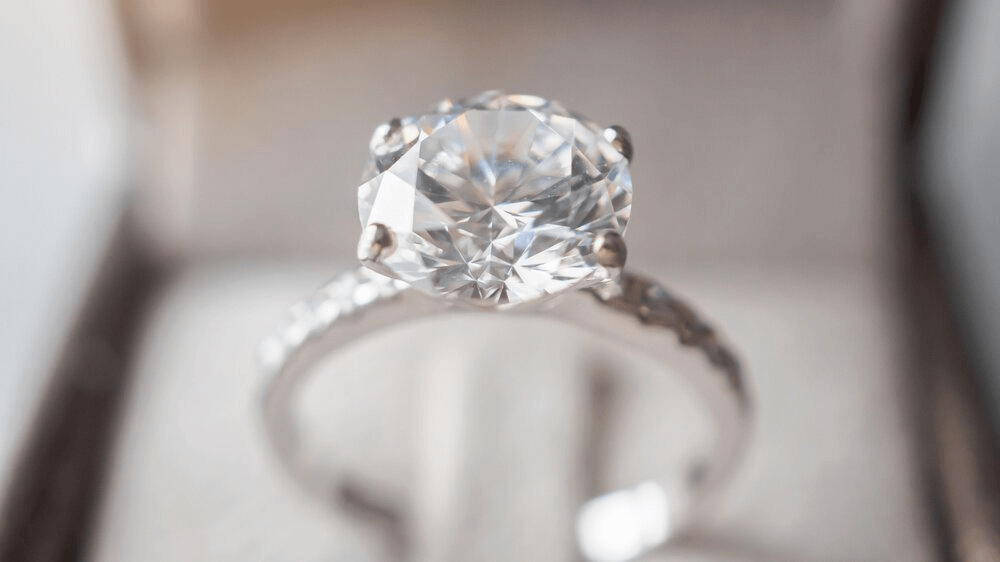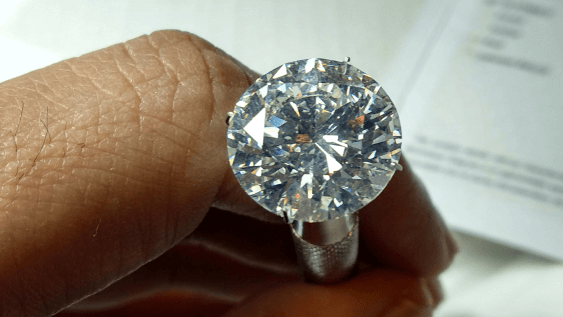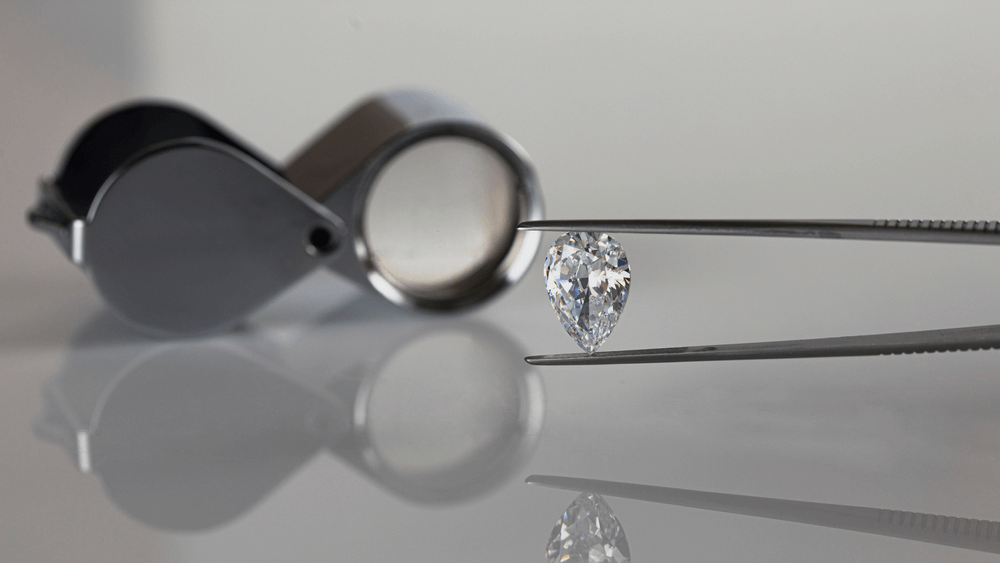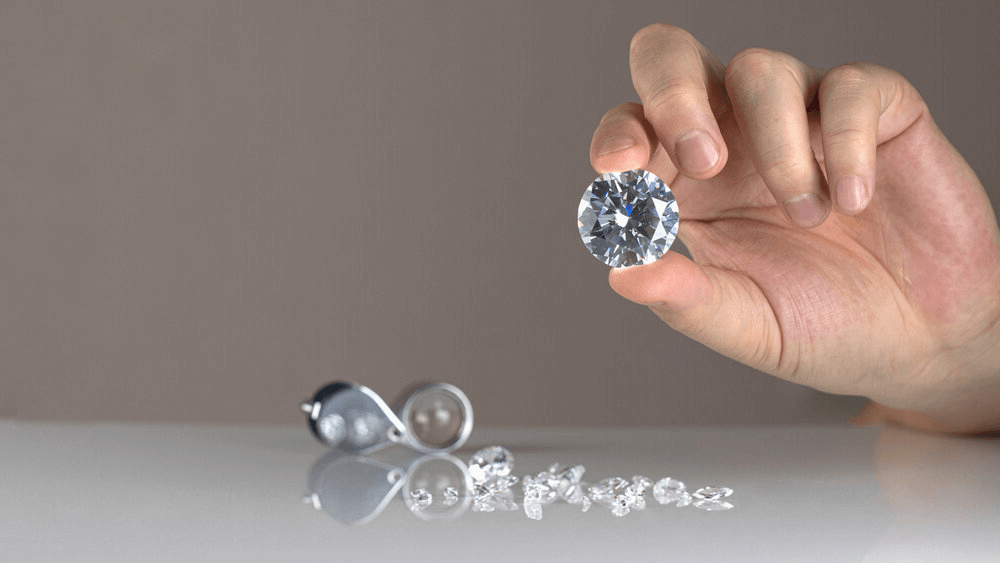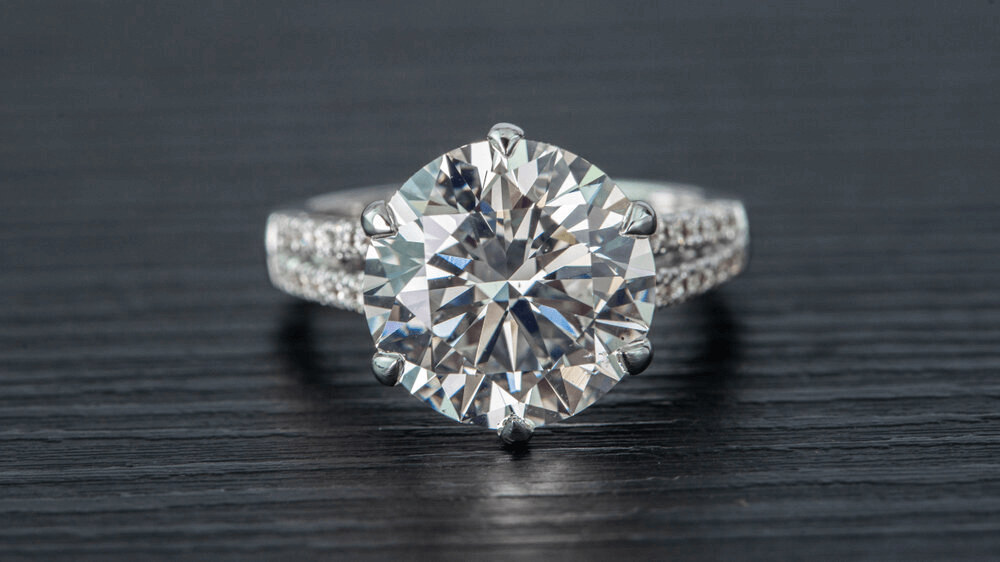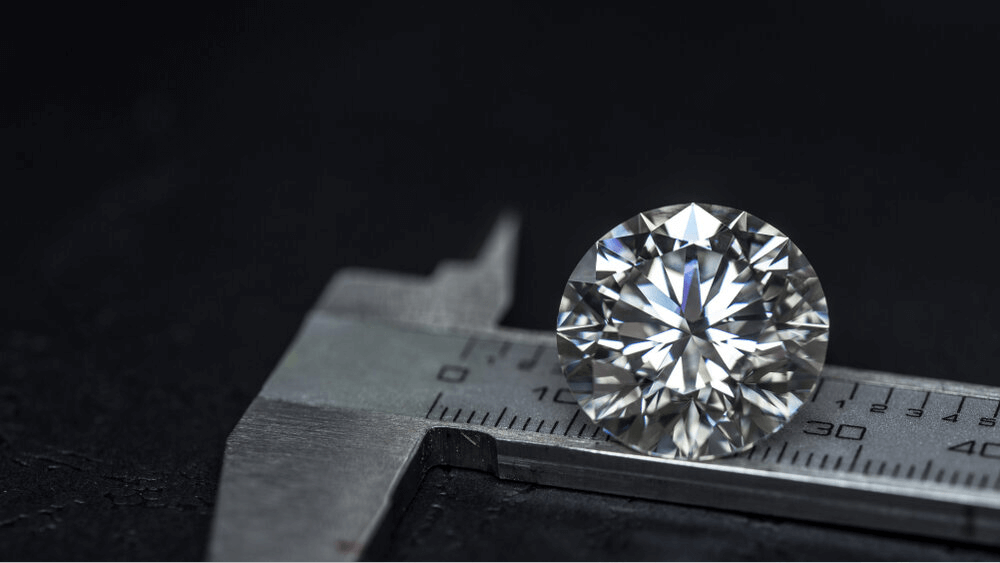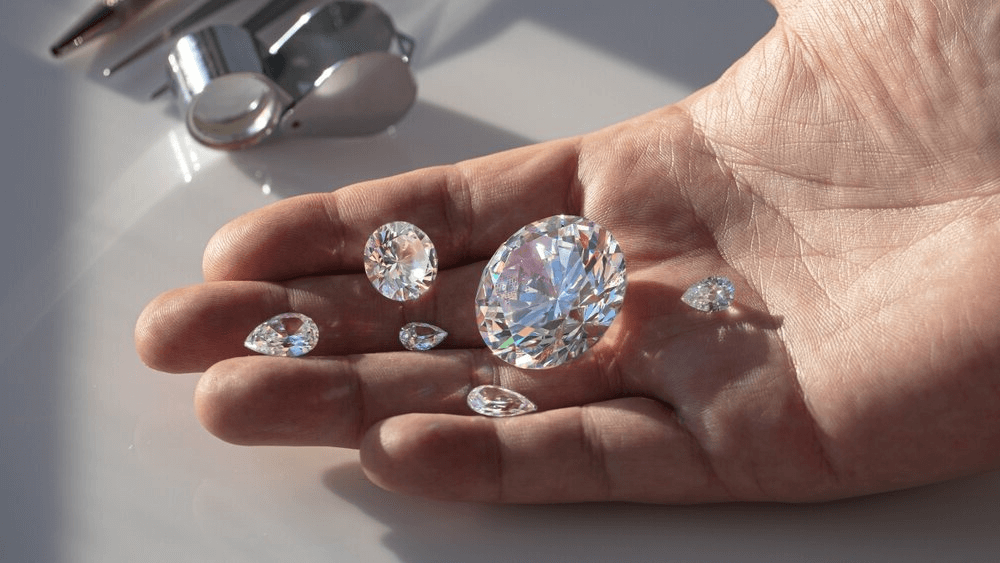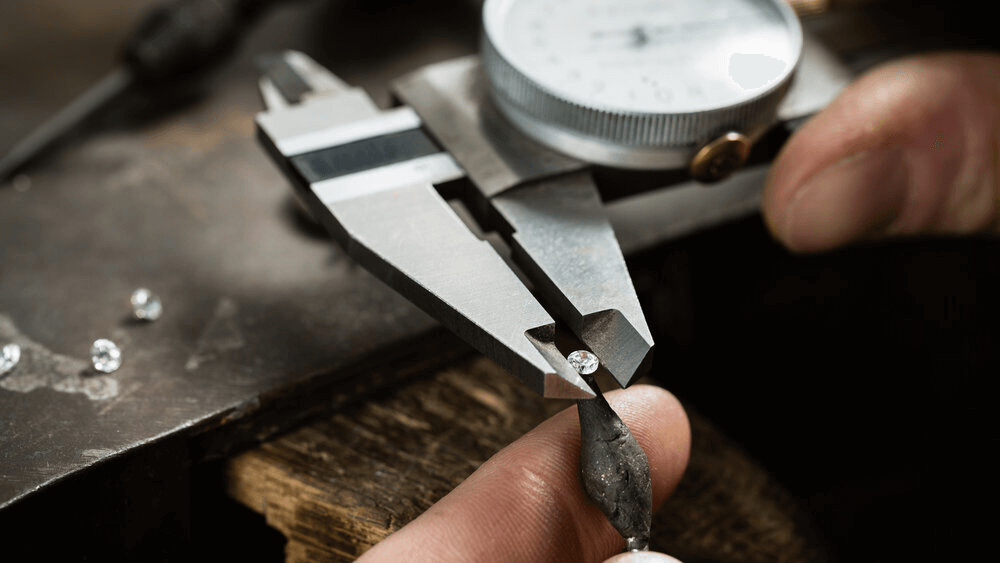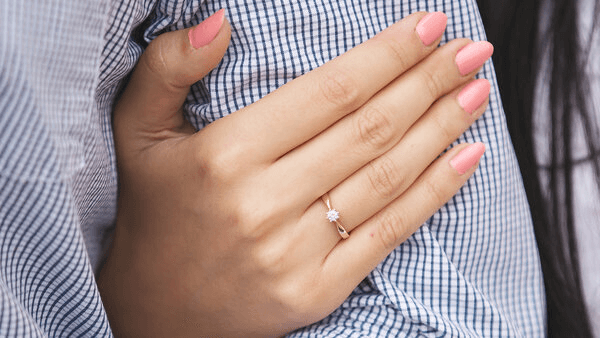20 Carat Diamonds: Indulge in Opulent Beauty

By Gary A.

Edited by Olivia H.
Published Aug 8, 2024
Edited on Mar 31, 2025
A 20 carat diamond ring is the ultimate statement of luxury, combining extraordinary size and brilliance to create a truly breathtaking piece—explore how to find the perfect one in our complete guide.

Navigate This Guide:
- 7 Quick Tips for Choosing a 20 Carat Diamond
- Introduction: The Allure of 20 Carat Diamonds
- Understanding the Four C’s of 20 Carat Diamonds
- Choosing the Perfect 20 Carat Diamond Ring
- Styling Your 20 Carat Masterpiece
- Purchasing Tips for a 20 Carat Diamond Ring
- Our Expert Take
- 10 Frequently Asked Questions About 20 Carat Diamond Rings
Before we dive deeper into the specifics, here are some practical tips to help guide your decision-making process:
7 Quick Tips for Choosing a 20 Carat Diamond
- Tip 1: Understand the Four C’s:
- Cut: This is the most crucial factor affecting a diamond’s brilliance and overall appearance. Always prioritize a high-quality cut. For a diamond as large as 20 carats, the cut will significantly impact its sparkle and fire.
- Color: Larger diamonds, like a 20 carat, will show color more prominently. Aim for a higher color grade (D-G) to ensure the diamond appears white and doesn’t have noticeable yellow or brown hues.
- Clarity: Given the size of a 20 carat diamond, inclusions (internal flaws) and blemishes (external flaws) will be more visible. Opt for a clarity grade of at least VS2 or higher.
- Carat: While you’re aiming for 20 carats, remember that two diamonds of the same carat weight can look different in size based on their cut.
- Tip 2: Certification is Essential:
- Always ensure the diamond comes with a certification from a reputable lab, such as the Gemological Institute of America (GIA) or the American Gem Society (AGS). This certification will verify the diamond’s quality and ensure you’re getting what you pay for.
- Tip 3: Examine the Diamond Under Different Lighting:
- Viewing the diamond under various lighting conditions (natural daylight, fluorescent, and incandescent) will give you a comprehensive understanding of its brilliance, fire, and potential flaws.
- Tip 4: Consider the Setting:
- The setting can influence the diamond’s appearance. For a diamond as large as 20 carats, consider a setting that provides security, like a bezel or six-prong setting. The setting should complement, not overshadow, the diamond.
- Tip 5: Research the Price:
- Diamond prices can vary significantly between retailers. Ensure you’re getting a fair price by comparing similar diamonds across different sellers. Remember, if a deal seems too good to be true for a 20 carat diamond, it probably is.
- Tip 6: Ask About the Return Policy:
- Given the significant investment, ensure the jeweler has a clear return or exchange policy. This provides peace of mind in case you have second thoughts or if the ring requires adjustments.
- Tip 7: Consider Future Resizing:
- While it’s best to get the correct ring size from the start, it’s also wise to ask about future resizing, especially if the setting is intricate or if the band has diamonds all around.
Now that you’ve got these practical tips, use Jeweler AI below to find the perfect engagement ring that suits your style and budget:
Introduction: The Allure of 20 Carat Diamonds
Explore the magnificence of 20 carat diamond rings, the pinnacle of luxury for your proposal. Uncover the secrets to value, beauty, and size in our guide.
When choosing the right diamond ring, the words ‘exceptional’, ‘magnificent’, and ‘spectacular’ have a nice ring to them. Of course, these are the words that can be used to describe any diamond, from a 5 carat to a 10 carat, but they’re used most frequently with the 20 carat. And that’s a little dangerous because it can easily draw you into making the purchase!
Is purchasing a 20 carat ring a bad thing? Of course not. On the contrary, it could be the best decision of your life, leaving you with a resplendent diamond ring that will last for generations. But the last thing you want to lead your purchase is buzzwords. When it comes to a decision like this, you need simple, hard facts. And we’re here to give them to you.
The Significance of Carat Weight
Firstly, it’s important to note just how significant a weight of 20 carats is. According to a recent study, the most popular weight for diamond rings in the US is between 0.5 to 1 carat, which is around $1,000 to $3,000.
And if you’re thinking: well, a 1 carat diamond is around $3,000, so surely a 20 carat diamond is around $60,000, you’d be sadly mistaken! We’ll talk more about price estimates below, but as a starting point, just know that a 20 carat diamond is particularly luxurious, to the point of extravagance.
Rarity and Value of 20 Carat Diamonds
The reason the 20 carat diamond is so luxurious has a lot to do with its rarity. Diamonds of such size are exceptionally rare by nature, requiring specific geological conditions that take millions of years to form.
Only a very small percentage of diamonds mined are large enough to yield a 20 carat gemstone, which makes them pretty highly coveted. Due to their rarity, they also have increased desirability, which drastically increases the price – but this can also be affected by the four C’s, which we’ll go into in more detail below.
Understanding the Four C’s of 20 Carat Diamonds
If you’re thinking of buying a 20 carat diamond, it can be easy to focus mainly on the carat and give less emphasis to the other 3C’s, but this would be a mistake.
To ensure you’re getting a stone of exceptional quality and beauty – rather than just size and rarity – you need to take into account the cut, color, and clarity. In fact, paying attention to the 4Cs gets more important the bigger the diamond gets, as the imperfections or deficiencies become even more noticeable.
Cut: The Art Behind the Sparkle
The cut of a 20 carat diamond is crucial for several reasons. Firstly, you’re buying a 20 carat diamond, so you’re clearly going for luxury and opulence above all else. With this in mind, a well-cut diamond will ensure the diamond’s facets work together to optimise its visual appeal, making the stone appear even larger and more luxurious than it already is.
Secondly, a skilled cutter can strategically position the facets to minimise the appearance of any inclusions. As we mentioned previously, deficiencies can be more noticeable the bigger the diamond gets, so this could be crucial in enhancing its clarity and overall beauty. To learn more about this click the link here: https://willyou.com/buying-guides/4cs/cut.
Clarity: Purity at Its Finest
Speaking of clarity, you will ideally be purchasing a gemstone with a high clarity grade, especially if you don’t want the diamond’s transparency and brilliance to be heavily impacted.
The GIA grading system goes from Flawless to Included, and while some of the lower grades are only noticeable under 10x magnification, they can still affect the way light passes through. Once again, you can learn more about clarity and how it impacts sparkle here.
Color: The Hue of Luxury
The color of the diamond refers to the visual appearance, which is graded on a scale from D to Z by the GIA. Buying a colorless – or near-colorless – diamond will ensure more light passes through, increasing the brilliance and fire of the gemstone.
Buying a diamond near the bottom end of the scale will ensure the opposite, making the diamond appear more dull and lacklustre, with minimal fire and less overall sparkle. Once again, you can learn more about color and the GIA scale here.
Carat: The Weight of Elegance
We’ve already talked about the carat, of course, but it’s worth repeating that this ‘C’ alone doesn’t solely determine the diamond’s visual size.
If you get the color, clarity, and cut right, you can maximise the wow factor of your diamond, and on the other hand, if you get them wrong, you can reduce that wow factor. It’s important, in this respect, to take everything into account before making that final decision.
Choosing the Perfect 20 Carat Diamond Ring
Once you have the 4Cs worked out, you’ll be one step closer to buying that perfect diamond. But the journey isn’t over just yet.
When it comes to a diamond of this magnitude, you should look carefully at how you choose the perfect ring, considering everything from certification to the type of diamond you’re choosing in the first place.
The Importance of Diamond Certification
Diamond certification is one of the most crucial things to take into account for a buyer. This is what will verify the authenticity and quality of your diamond, providing an objective assessment of the diamond’s characteristics, including its cut, color, clarity and carat – which you should have full knowledge of by this point!
By examining the certification, you can also set a benchmark when comparison shopping and you’ll be able to purchase with far more confidence – especially considering insurance and investment value.
Lab-Grown vs Natural Diamonds
Of course, you also have the choice of lab-grown diamonds. For those unaware, these are synthetic diamonds that are created through a process that replicates the natural conditions in which natural diamonds are formed.
This usually involves two methods: HPHT (high-pressure high-temperature) or CVD (chemical vapor deposition). Because natural diamonds are limited by geological factors and lab-grown diamonds are produced in larger quantities, the prices are typically lower too – although it should be noted that some consumers place a premium on natural diamonds specifically due to their rarity.
Styling Your 20 Carat Masterpiece
Another thing you should factor into the equation is styling. If you’ve taken the time and spent the money on securing a 20 carat diamond, you’ll want to choose a setting that complements its grandeur.
Selecting the Right Setting
There are numerous settings to choose from that can complement a 20 carat diamond, with some of the most popular including a solitaire setting – allowing the diamond to take centre stage with minimal distractions – the bezel setting – surrounding the diamond with a metal rim for extra security – and the tension setting – giving the illusion that the diamond is suspended between two ends of the ring band. As ever, you should ensure to pick something that mirrors the personality of the wearer, while also providing excellent security and stability for the diamond itself.
Complementary Jewelry Pieces
In our opinion, the stability and durability of your setting is the most important thing to get right, especially for a carat as big as this. In terms of mirroring the aesthetic, this can easily be done with complementary jewelry pieces: a pair of diamond stud earrings that complement its sparkle, a delicate diamond pendant, or smaller diamond bands that sit alongside the 20-carat diamond to create a layered and dynamic look. There are so many ways to mix and match styles with a diamond like this, all it takes is a little thought and perhaps a spark of inspiration.
Purchasing Tips for a 20 Carat Diamond Ring
Once you have all of this in your head, you’re good to go. There are just a few little things you should remember before you part with your money.
Online vs In-Store Shopping
Firstly, for something like this, it’s always best to do your shopping online. When in-store, it can be very easy to feel pressured with time and end up making a purchase quickly rather than carefully. Shopping online also allows you to look at a much broader range of diamonds in terms of size, cut, color, and clarity, with more detailed information on the qualities of all of them.
Ensuring a Secure Transaction
You should also make sure the transaction is safe and secure. You can do this by choosing a well-known, reputable jeweller, verifying the certification – as we mentioned earlier – requesting documentation and receipts, and using a secure payment method. It’s also worth obtaining insurance coverage for a carat of this size to protect your investment against loss, theft, or damage.
Our Expert Take
The 20 carat diamond is one of the most beautiful things to come out of this planet, so it’s no surprise that buying one is a lengthy – at times complex – process. Just remember to take as much time as you need and do as much research as possible into the most fundamental areas. You want the moment that you hold the diamond ring for the first time to be as special as possible, and the journey starts now.
10 Frequently Asked Questions About 20 Carat Diamond Rings
- Q: What makes a 20 carat diamond ring so special?
- A: A 20 carat diamond ring is exceptional due to its rare size, making it a symbol of luxury and status. Its significant carat weight ensures a stunning visual impact and remarkable brilliance.
- Q: How does the size of a 20 carat diamond compare to average engagement rings?
- A: A 20 carat diamond is significantly larger than the average engagement ring, which typically ranges from 1 to 2 carats. A 20 carat diamond has a much greater presence and visual impact.
- Q: Are 20 carat diamonds only available in specific shapes?
- A: While certain shapes like round, cushion, and emerald cuts are more common, 20 carat diamonds can be found in various shapes, depending on availability and cutting expertise.
- Q: How important is the cut of a 20 carat diamond?
- A: The cut is crucial for a 20 carat diamond as it directly influences the stone’s fire, brilliance, and overall appearance. An excellent cut ensures that the diamond reflects light beautifully, maximizing its sparkle.
- Q: Can I find a 20 carat diamond in a colorless grade?
- A: Yes, 20 carat diamonds can be found in colorless grades (D-F), but they are rare and command a premium price. Choosing a slightly lower color grade (G-I) can still provide a near-colorless appearance at a better value.
- Q: Is it necessary to have a 20 carat diamond certified?
- A: Absolutely. Certification from a reputable lab like GIA or AGS is essential to authenticate the diamond’s quality, ensuring you’re getting a genuine and accurately graded stone.
- Q: How should I care for my 20 carat diamond ring?
- A: Regular cleaning with a soft brush and mild soap, annual check-ups with a jeweler to inspect the setting, and avoiding exposure to harsh chemicals will help maintain your ring’s beauty.
- Q: Are 20 carat diamond rings only suitable for special occasions?
- A: While a 20 carat diamond ring is undoubtedly extravagant, whether it’s suitable for daily wear or special occasions depends on personal preference and lifestyle.
- Q: What is the price range for a 20 carat diamond ring?
- A: The price can vary widely based on the diamond’s cut, color, clarity, and the ring’s overall design, ranging from hundreds of thousands to millions of dollars.
- Q: How can I ensure I’m getting a fair price for a 20 carat diamond ring?
- A: Comparing prices and certifications from reputable jewelers, understanding the Four C’s, and possibly consulting with an independent gemologist can help ensure you’re paying a fair price.
Elevate your engagement with a 20 carat masterpiece from Jeweler AI. Discover perfection tailored just for you.
Here are more specific diamond prices topics to browse:
- Melee Diamonds: The Perfect Accents to Enhance the Center Stone
- Small Diamond Engagement Rings: Big Sparkle Comes In Little Packages
- 0.25 Carat Diamond: Tiny Treasure or Just Too Small?
- The True Value of a 0.5 Carat Diamond Ring Revealed
- 0.7, 0.8, 0.9 Carat Diamond Showdown: Which One Wins?
- Price Alert: Don’t Overpay for a 1 Carat Diamond Ring!
- What You Should Pay for a 1.5 Carat Diamond Ring?
- Price Alert: How Much Should You Pay for a 2 Carat Diamond Ring?
- How Much Does a 2.5 Carat Diamond Really Cost?
- The Real Cost of a 3 Carat Diamond Ring
- Industry Secret: How Much Does a 4-Carat Diamond Ring Actually Cost?
- How Much is Too Much? The True Cost of 5 Carat Diamond Ring!
- 6 Carat Diamond Rings: Pricing Breakdown & Value Tips
- 7 Carat Diamond Rings: Affordable Luxury Prices Revealed
- 8 Carat Diamond Rings: Price Comparison & Savings Tips
- 9 Carat Diamond Rings: Detailed Pricing Guide & Best Deals
- 10-13 Carat Diamonds: The Ultimate Symbol of Luxury!
- 15 Carat Diamonds: Why Celebrities Love Them!
- Decoding the Grandeur: The Journey to Choosing a 25 Carat Diamond Ring
- Average Carat Size for Rings: What’s the Ideal?
- Understanding What Is CTTW Diamond In Engagement Ring
- The Truth About Why Diamonds Are So Expensive and Incredibly Valuable
FOLLOW-UP GUIDE SERIES

